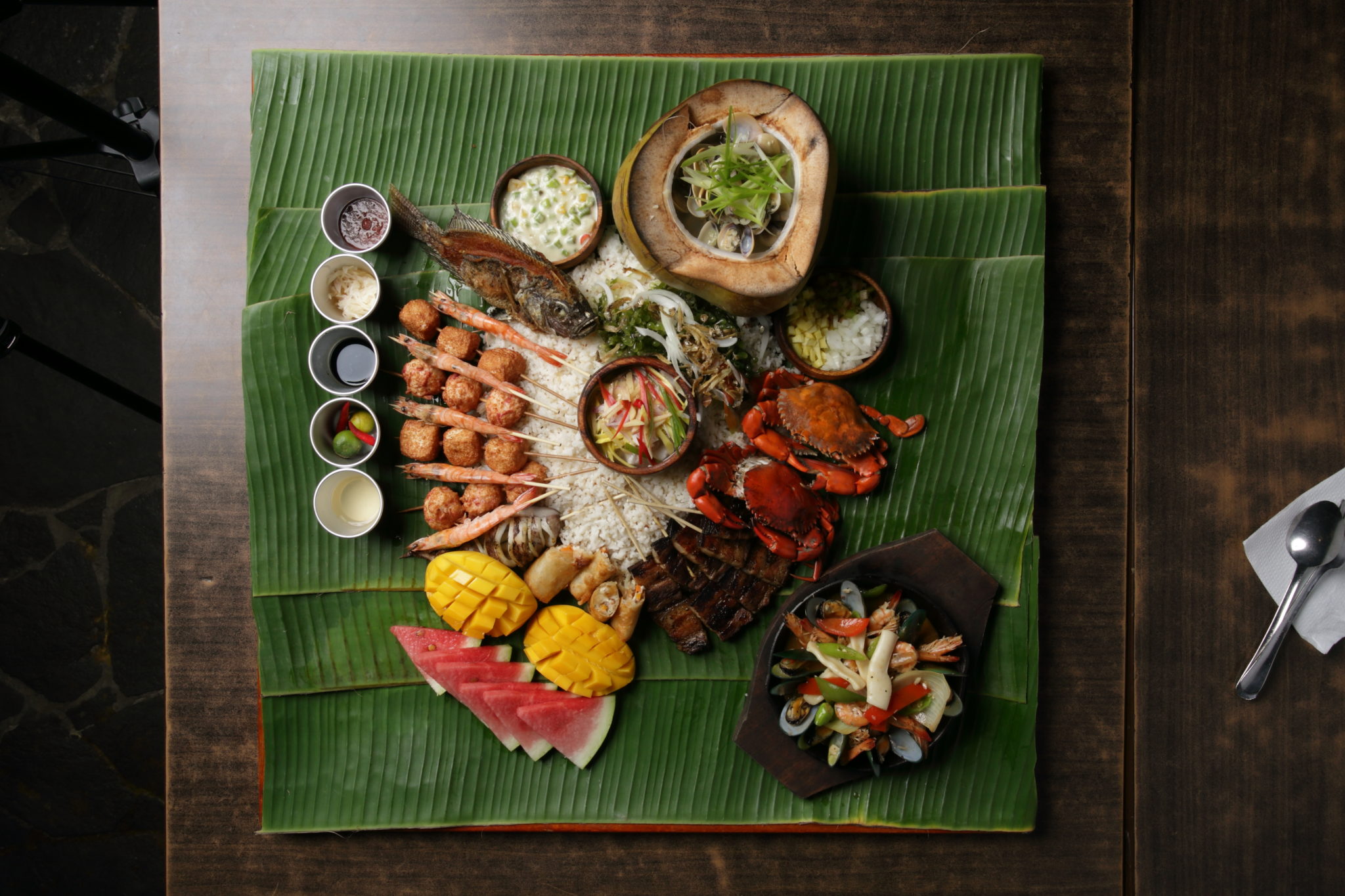After a marketing stint for Heaven & Eggs, restaurateur Owen Gan left his family business to work full time in the restaurant industry. In 2012, he joined the Red Crab Group (whose main brands include Seafood Island) where he serves as managing partner. With Seafood Island making major strides this year (they’ve recently gone into franchising), we ask Gan for industry tips and strategies.
You follow what is considerably a traditional dining concept. It’s very family-centric.
I’d say Seafood Island is traditional in the sense that it’s celebratory in format. Because of the types of offerings we have, we automatically bring in big groups. We serve communal food. However, I’d be careful to point out how Filipinos define family—our idea of family is huge. Besides our immediate and extended family, our friends also become family.
How do you innovate?
Seafood Island only has two key products: boodle feasts and seafood. For our boodle feasts, it’s experience—getting feedback, understanding what works and what doesn’t. And then we review our sales mix. The operators know what’s not working. Mind you, the boodles do not behave the same way across borders.
Do you think this strategy of capitalizing on big groups will continue to work in the next years?
Filipinos naturally gravitate towards that comfort [dining as a family], so yes. Another thing is, the food has to be good, especially since everyone’s palates are more educated now. Even if diners are only willing to spend small amounts of money, you can’t serve mediocre food. Where we can stand out is in the dining experience—if it’s Instagrammable, if it’s hip enough.

Let’s talk about Crustasia, which recently underwent a kind of rebirth. How is it different now?
It’s now more seafood-centric, so we call it an Asian seafood market. We try to put in more Southeast Asian seafood recipes. We’ve also updated recipes because, again, the palates of diners are more refined. But now, people pay closer attention to recipes… about what’s authentic. More than trying to make the recipes authentic, we’ve updated them in a way to become more relevant to the current dining scene.
What about branding?
We’ve adopted the look of a seafood market. It’s less stiff and there are more colors. Not like before where it just looked like a formal Chinese restaurant. We’re also trying to address a bigger spectrum of diners—the people who supported Crustasia before and this new wave of diners who’ve never tried it.
Seafood Island has recently started franchising. What brought about this decision?
There was demand for the brand coming from all over the Philippines. And the good thing is we can operate in different places.
Any challenges encountered throughout that process?
The main consideration we had to make was to look for partners who are really embedded in those locations. It’s best to have people who speak the dialect, who know the area, and who really know the market. That’s also another reason why we decided to franchise: When we wanted to operate outside Metro Manila, we found that it’s difficult to get a pool of people, understand the staff, speak the dialect, know the local market. The franchising format gave us the best solution to that.
“International brands tend to come from a high place. The local food scene needs anchor operators who are local brands since we know how to maximize our local resources best.”
How’s the work dynamic between you and the franchisees?
Things that we cannot do ourselves, the franchisees take care of. For example, in Baguio, where we didn’t know how to maximize the potential of the area, our partners came in—they knew the kinds of seafood in Baguio. There’s local expertise and local stake. On our end, we allow for 25 percent localization of the menu.
So localization is a key part of your franchising approach?
Part of being a seafood restaurant and aiming to become the main seafood brand in the Philippines is celebrating local seafood. There’s no Filipino seafood restaurant where, if you visit its branches outside Metro Manila, you’ll see the components of the menu change according to what’s available in the local area. We’re trying to be that brand.
Do you think local brands will still have a place in the food industry?
I think the local food scene will always need local concepts. At the end of the day, international franchises have their limits. They operate on particular recipes, raw materials, and rules. They can’t adjust the menu according to what Filipinos want, how Filipino diners really are. Case in point: Nam Nam, a Vietnamese concept from Singapore. Would you believe, when we opened it, we weren’t allowed to serve water or extra rice!
Culture definitely matters.
Yes. And international brands tend to come from a high place. The local food scene needs anchor operators—local brands—since we know how to maximize our resources best.
Any advice for those who want to survive in the industry?
First, you have to know your brand. Find a way to constantly make yourself relevant to your market. We’re a seafood brand—we have to be loyal to that. Number two, people. You have to be, in some ways, a people person. And it starts with appreciating your people. Remember that they’re your partners. Number three, customers. Spend time to understand them.
Originally published in F&B Report Vol. 15 No. 5










































